
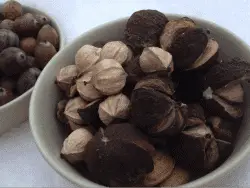 Wild foods are largely known as survival foods for emergencies or as novel delicacies to spice up normal kitchen fare. In either case long term storage is not a primary concern. In the event of a long-term survival situation you would want to store surplus food away as soon as you were feeling well-fed enough to have it. If you were faced with fending for yourself for unknown duration while far removed from electricity and the globalized food network, you would want plenty of time to enjoy the beauty and quiet of your surroundings. I figure the luxury would come only after many daily chores and activities, and only alongside a nice storage cache of food. How could this be accomplished without electricity?
Wild foods are largely known as survival foods for emergencies or as novel delicacies to spice up normal kitchen fare. In either case long term storage is not a primary concern. In the event of a long-term survival situation you would want to store surplus food away as soon as you were feeling well-fed enough to have it. If you were faced with fending for yourself for unknown duration while far removed from electricity and the globalized food network, you would want plenty of time to enjoy the beauty and quiet of your surroundings. I figure the luxury would come only after many daily chores and activities, and only alongside a nice storage cache of food. How could this be accomplished without electricity?
By Nathaniel Whitmore a Contributing Author to SHTFBlog and SurvivalCache
Today’s food is riddled with preservatives. Such chemicals are so commonplace that the average person might think nothing of it. Certain items, like bread that remains soft longer than natural, have become everyday foods. If you have made bread at home or purchase it from a bakery you know that bread begins to get stale very quickly. For countless generations making bread was a daily or weekly task. Even storage of flour would have been relatively difficult – bugs, mold, and rancidity were all very real problems, as they still are today. Grains, however, in their whole form (better yet, unhulled form) will store rather well. Once cracked or ground, seeds are dead and won’t germinate. In their whole form, seeds are “designed to last”. Of course, many do have short shelf-lives. Gardeners often know which veggie seeds can be saved for years and which should be all planted rather than saved for a later season. Some seeds have been proven viable after thousands of years.
Related: Choosing the Best Survival Food for Your Bug Out Bag
The storable properties of seeds is a major reason grains and beans became primary staple foods around the globe. Likewise, roots, which also have the capacity to store energy, have been primary storage foods around the world. Many roots will sprout leaves even after sitting in a root cellar through a whole winter, or in the fridge for longer than you intended. This is a clear indication that the root still has life. Once the root has died, however, it will begin to rot.
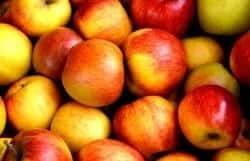 Many plant parts do not store away energy in the manner of a seed or perennial root. Perhaps this is most obvious in fruits. Fruits are, in a certain way of looking at them, designed to rot. The fruit carries the seeds and “wants” to be eaten in order to assist seed dispersal. Consider the various berries, for instance. When birds eat the fruits the seeds pass through their digestive system and get deposited, with a nice bit of fertilizer, in a different location. (It should be noted that the term “fruit” has different uses. In some context “fruit” might refer to the seed itself. Here we are talking about the fleshy fruits that surround seeds, such as what is commonly thought of as fruit when considering the food groups, including things like Apples and Cherries.) The nature of fruit is such that at the peak of ripeness it has already begun to rot. So, while certain hearty fruits, like Apples, are well-known storage foods, many fruits are difficult to keep around. Of course, as will be discussed later in this article, there are many ways to prepare fruits for storage.
Many plant parts do not store away energy in the manner of a seed or perennial root. Perhaps this is most obvious in fruits. Fruits are, in a certain way of looking at them, designed to rot. The fruit carries the seeds and “wants” to be eaten in order to assist seed dispersal. Consider the various berries, for instance. When birds eat the fruits the seeds pass through their digestive system and get deposited, with a nice bit of fertilizer, in a different location. (It should be noted that the term “fruit” has different uses. In some context “fruit” might refer to the seed itself. Here we are talking about the fleshy fruits that surround seeds, such as what is commonly thought of as fruit when considering the food groups, including things like Apples and Cherries.) The nature of fruit is such that at the peak of ripeness it has already begun to rot. So, while certain hearty fruits, like Apples, are well-known storage foods, many fruits are difficult to keep around. Of course, as will be discussed later in this article, there are many ways to prepare fruits for storage.
If we consider the vegetative (the green, leafy) portions of plants we can see that they also do not have the same storage properties as the roots and seeds. The nature of the stems and leaves is to grow, not so much to store energy for later use. We know that cuttings can take root, which indicates that the living aspect of the plant remains even in the part that is removed. (Compare this to the animal organism. If you lost your arm, it wouldn’t so easily grow another person.) But it doesn’t take long before the leaf or stem cannot survive after it has been removed. The leaf quickly perishes. With drying we can save much of the nutritive properties of vegetative plant parts.
Methods of Storing Wild Foods
There are few basic methods of storing wild foods. As with most things, there are pros and cons of each storage method.
Root Cellar Storage – If lost in the wild, you may not have a root cellar per se – here we refer to the simple storage of whole roots and similar plant parts in some form of insulated chamber. Just as a proper root cellar puts the plants below the ground for insulation, you might do the same with a hole or natural structure like a rock ledge. The idea here is to get the food away from the freezing temperatures that could destroy them. The same idea applies to high temperature in which the insulation prevents spoilage by keeping the food cooler than the outside air.
Drying – This is one of the oldest food storage methods. It can be easy with electricity. Without modern electricity, drying foods well poses many potential problems.
Pickling – Though another ancient and relatively simple preservation method, pickling does pose distinct problems in a survival situation. The challenges mostly related to having the appropriate materials like vessels and plenty of salt or vinegar.
Pemmican – This preparation is a mixture of protein, fat, and fruit. The ingredients are preserved through drying and preservation is assisted by the fat content.
Submersion in Water – This method came to mind mostly in relation to acorns, which are submersed in order to leach the tannins and render edible. It is a traditional method of storage to leave them underwater, besides that it is a method of leaching. It might be worth considering such a method for other foods as well.
Root “Cellar” Storage / The Cache
 Storing foods in a root cellar or similar structure is one of the oldest and most time-proven methods. Even animals like squirrels store foods in a cache. Just recently I turned over a sort of compost pile that was composed of weeds and cuttings from the yard and garden and included a large number of sticks and twigs. The thicker, woody branches provided a certain structure to the heap that the local red squirrels (not knowing my intentions to flip the pile) thought perfect for storing the Black Walnuts in, which were growing nearby. The entire heap was full of Black Walnuts.
Storing foods in a root cellar or similar structure is one of the oldest and most time-proven methods. Even animals like squirrels store foods in a cache. Just recently I turned over a sort of compost pile that was composed of weeds and cuttings from the yard and garden and included a large number of sticks and twigs. The thicker, woody branches provided a certain structure to the heap that the local red squirrels (not knowing my intentions to flip the pile) thought perfect for storing the Black Walnuts in, which were growing nearby. The entire heap was full of Black Walnuts.
Caches of nuts and acorns that were stowed away by wildlife could be important survival foods. One method of storage is to simply let the animals do their thing and make a note of where they have done so. I suppose a main problem with such a method is that you might not be able to predict when the squirrels will return to their cache and remove the nuts.
It is possible to imitate the squirrels and store your own harvest of Hickory nuts, Black Walnuts, or acorns by mounding them up with leaves and other forest debris. However, you might then find that your cache has been raided by some critter when you go to uncover it. This could be very disappointing.
Native Americans regularly stored food by burying it in the ground. I imagine this was often the only method available because of the nature of the camp and travelling needs. As is often depicted in tales and stories of the semi-nomadic days of the Native, such caches would spoil relatively easily. Mold would have been a common problem.
Much of the benefit of the root cellar is related to the ground remaining around 55 degrees at a certain depth. That constant is generally not attained with the depth of a root cellar, but any depth provides more consistency than the outside air. For this reason foods can also be kept cooler in the summer with this kind of storage just as they are kept from getting too cold in winter.
In the wild there are far too many variables for us to exhaust here. Depth and insulation requirements depend on the conditions, timeline, and more. The main point is that through burying or covering material various storage requirements can be attained. One can consider natural rock forms and other natural formations that might lend themselves to cold storage. Rocks and logs can be used to build up sides. There are many possibilities. The principle is that the earth is the insulation, potentially with the help of rocks and wood.
The cardinal directions apply (one should always have a good compass and pay attention to the movement of the sun and moon in relation to north, east, south, and west). A north-facing slope, which receives less sun, will generally be cooler than the south-facing slope. Water also affects the temperature changes of the area. Such things are all taken into consideration of site and design.
One method of winter storage is to bury things in layers so that an assortment of foods are available each time you dig up a layer. Leaves or straw can be used to keep your goods from direct contact with the earth and to provide insulation and marking for each layer. Roots, certain fruits, and other storage foods can do surprisingly well if put away properly with consideration of temperature and humidity.
Drying
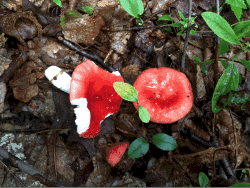 Drying is one of the oldest methods of food preservation. I have even seen squirrels drying mushrooms for storage (Russula spp.) It is quite natural. However, it can also be difficult. Without proper airflow, temperature, and humidity, drying can be quite difficult. In many cases drying of certain mushrooms, perhaps aging as well, could help remove mild toxins and help transform something usually avoided to an edible.
Drying is one of the oldest methods of food preservation. I have even seen squirrels drying mushrooms for storage (Russula spp.) It is quite natural. However, it can also be difficult. Without proper airflow, temperature, and humidity, drying can be quite difficult. In many cases drying of certain mushrooms, perhaps aging as well, could help remove mild toxins and help transform something usually avoided to an edible.
Air drying is easiest in dry climates and seasons. Sufficient airflow is often an issue. With increased humidity is an increased need for airflow. If electricity is available, a simple fan can help. Exposure to sun can help. Certainly it is good to avoid areas so cut off from the sun that they remain constantly moist. Too much sunlight, however, could be damaging and foods should be removed from exposure when they are dry enough.
A great way to utilize the sun is to construct a solar dehydrator. There are many possible ways to do so, though I like the idea of the heat-trap channelling to a container with shelves and vents. A simple design is like that of a small children’s slide. The heat-trap is like a slide painted black with glass or plexiglass covering it. As it heats up in the sun, the hot air is allowed to rise into the area with racks of plant material. Vents can be adjusted to regulate the temperature.
Another method that might prove useful in a survival situation is to use fire to assist in drying. Perhaps nice flat rocks used for the fire-ring can act as drying plates as they heat up by the fire. Another possibility is to construct racks near a fire.
Of course, today many people simply use an electric dehydrator. They come in several varieties. They work quite well and can be used for preparing many different foods for storage.
Pickling
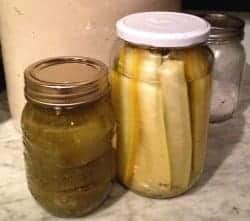 Pickling requires salt or vinegar. Some methods also require pressure. Pressure is obtained through the old-fashioned plate and rock method, which is just that – a plate and a rock placed on top of the contents of the crock to provide weight, or by the mechanics of a pickle press. A major nutritional consideration of pickles and other fermented food is probiotics. Probiotics help with digestion in general, which is particularly a concern during nutritional imbalances that might occur in a survival situation. Probiotics also help recovery from certain illnesses, especially diarrhea and other imbalances that can affect the gut flora.
Pickling requires salt or vinegar. Some methods also require pressure. Pressure is obtained through the old-fashioned plate and rock method, which is just that – a plate and a rock placed on top of the contents of the crock to provide weight, or by the mechanics of a pickle press. A major nutritional consideration of pickles and other fermented food is probiotics. Probiotics help with digestion in general, which is particularly a concern during nutritional imbalances that might occur in a survival situation. Probiotics also help recovery from certain illnesses, especially diarrhea and other imbalances that can affect the gut flora.
Pemmican
Pemmican is a method of storing protein, fat, and berries. Animal meat and fat, such as from buffalo or deer, is mashed up with berries. The items are dried to some degree before being ground together. Then patties are formed and allowed to dry appropriately for storage. Pemmican is considered to be an ideal survival food and was a staple food of North American Natives of cold areas.
Submersion in Water
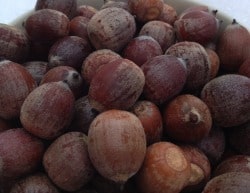 One time I held an acorn-shelling party. Well, I like to call it a party, but more of a gathering set on shelling significant quantities of acorns. In spite of protests from friends who had helped with the tedious task, I wanted to test out the primitive method of leaching the astringent tannins out of the acorns by leaving them in a stream. My comrades we sure something would go wrong, and they were right. Because of the time that it takes for the tannins to leach out of the acorns I had left them in the stream for quite a while. Then, the stream froze and this enabled the squirrels to use the ice bridge as a trail to my stash of acorns.
One time I held an acorn-shelling party. Well, I like to call it a party, but more of a gathering set on shelling significant quantities of acorns. In spite of protests from friends who had helped with the tedious task, I wanted to test out the primitive method of leaching the astringent tannins out of the acorns by leaving them in a stream. My comrades we sure something would go wrong, and they were right. Because of the time that it takes for the tannins to leach out of the acorns I had left them in the stream for quite a while. Then, the stream froze and this enabled the squirrels to use the ice bridge as a trail to my stash of acorns.
Read Also: Emergency Foods From Wild Plants
Another traditional method was to dig the acorns into the mud below a body of water. I have never tried it. It would certainly help to avoid the problem I just described, and would avoid leaving them somewhere to get frozen in the ice. Though I have mostly regarded submersion as a method for acorns, I wonder about other potential.
An additional form of submersion is to submerse food in the snow or ice. This has been practiced by arctic people and through winters since ancient times. I imagine the drawbacks are similar to leaving acorns in the stream. Though I wonder who might come around to find meat submersed in wintery insulation. Freezing damages root crops and you would not want to subject your stored seed to that much above-ground moisture.
Preparation
Maybe this is all seeming a little nuts. I did, after all, mention squirrels at least twice. (Strange how similar we could be to the little critters.) It has become my work, as an herbalist and educator, to learn the traditional practices of foraging for wild foods and I have spend a lot of time off the grid wondering how these things might be done, if food and electricity were suddenly unavailable. In my opinion this knowledge should be kept alive as a matter of general responsibility.
While some of the above discussion relates directly to being separated from the civilized world, much of it can be adapted to the common kitchen. Drying and pickling can take place right on the counter, and it should not be difficult to create a root cellar in even the modern kitchen or just outside one’s home. Learning these things can reduce your reliance on electricity while increasing your food storage space at home.
from SurvivalCache http://survivalcache.com/emergency-storage-of-wild-plant-foods/
No comments:
Post a Comment